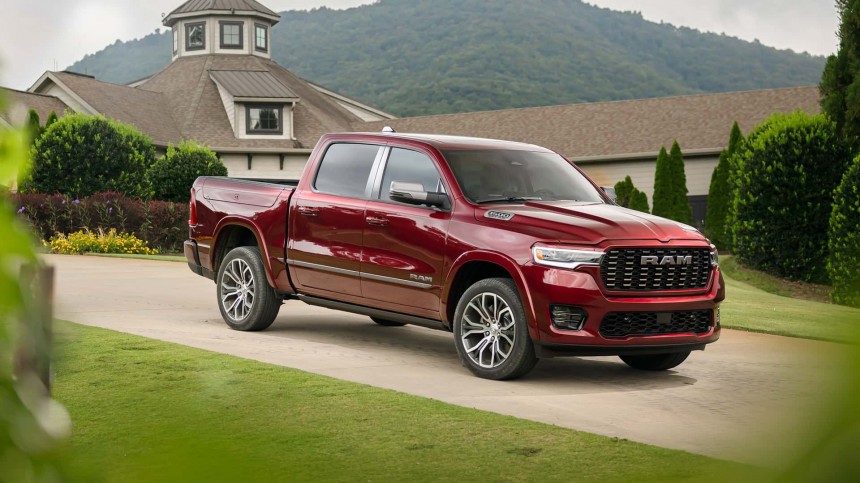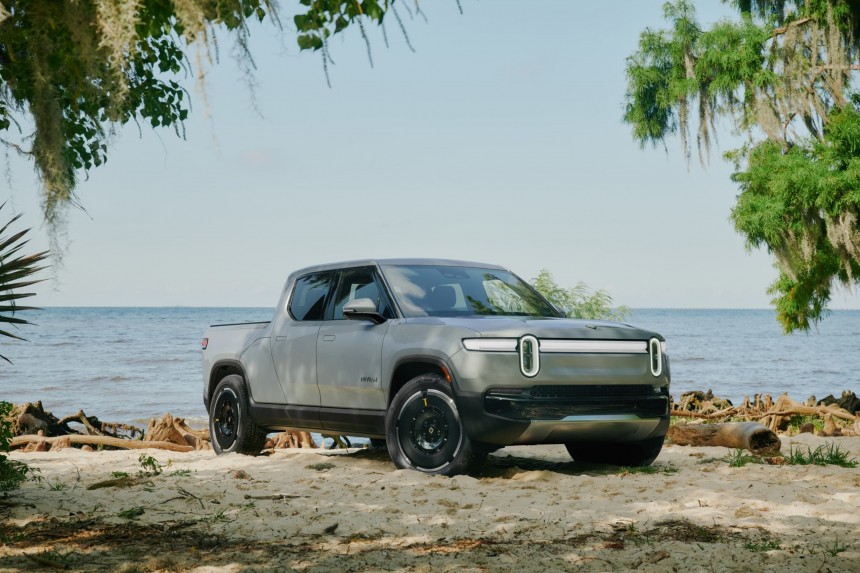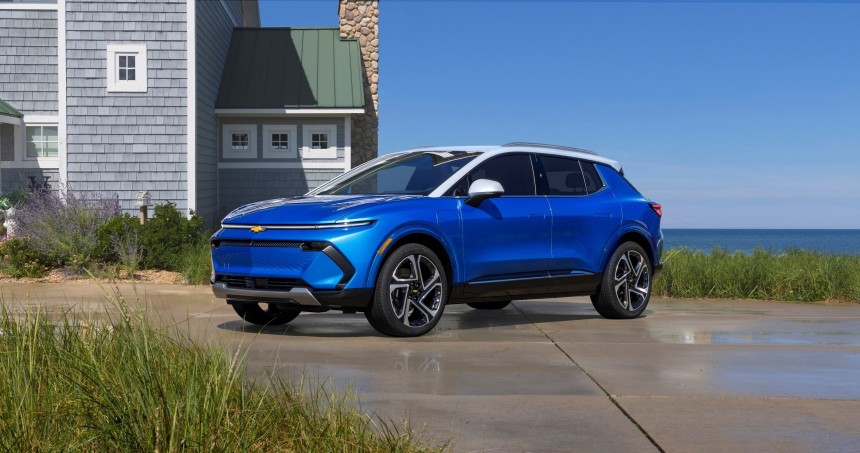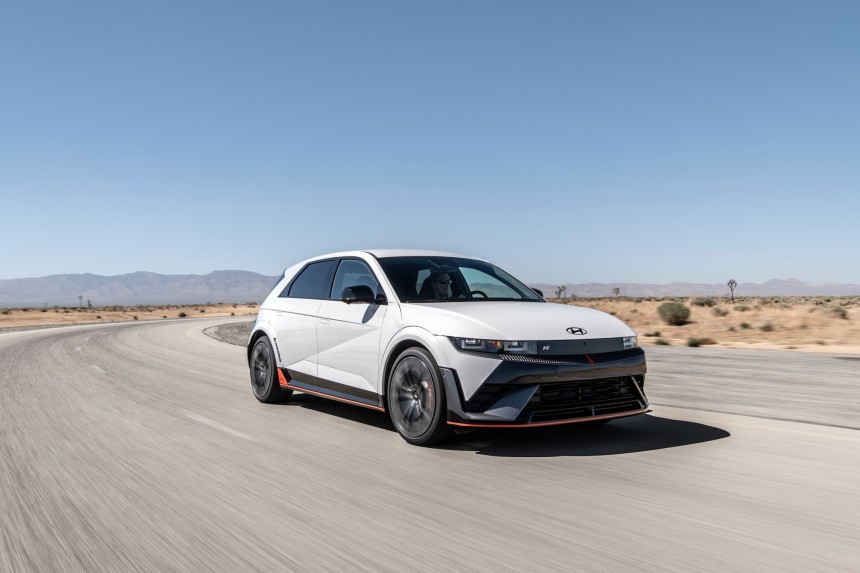Earlier this week, the 2025 North American Car, Truck, and Utility Vehicle of the Year (NACTOY) jury announced the three finalists in each category. I do not doubt the jurors have had a tough time picking the best candidates. However, I also think the jury sided with the least disruptive of them. That's why I decided to involve you all in the voting process after a little bit of cheating by choosing our own finalists.
As the North American Car, Truck, and Utility Vehicle of the Year jury announced the 2025 finalists, people quickly noticed that only two electric vehicles made the shortlist. This is intriguing, considering that almost half of the models (12 to be precise) on the "Best of 2025" initial list were powered exclusively by electricity. Only eight were battery-powered in 2024, yet five were among the finalists (the Kia EV9 won the SUV category). Talking about mood swings.
Someone could argue that the result reflects the current market trend, with EV sales losing steam and hybrids coming again into the spotlight. That might be true, but only because legacy carmakers have failed to build the EVs customers want to buy. However, I still think selecting 12 electric vehicles among the 25 semifinalists and then wiping them out in the final stage because you feel the EV trend is a goner into 2025 is wrong.
Yes, politics may have dramatically changed, but I don't think EVs are going away. They might still be too expensive for the average car buyer, but that is set to change as more affordable models enter the market. The Chevrolet Equinox EV is the best example, with a price starting at $35,000. Coincidentally, I believe the Equinox EV is a strong 2025 NACTOY contender and will likely win unless bias intervenes again.
Some might wonder why no Tesla model was considered among the candidates. After all, the Model 3 was reimagined in 2024 with a fresh design and vastly improved features and performance. Launched late last year, the Cybertruck is this year's bestselling electric pickup truck despite its high price. It's hard to argue that the Cybertruck is the most disruptive model for the automotive industry. However, Tesla doesn't offer media loaners or advertise, so this voting process is more about politics than cars.
That's why I dared introduce my own bias into the process and warned you about cheating in the lead paragraph. Not to the point of selecting other vehicles for consideration, although I believe this process could be more transparent. Instead, I started from what the NACTOY jury announced in September, the so-called "Best of 2025" list. This comprised 25 vehicles, with 10 each in the Car and SUV categories and five trucks for good measure, as you ca see below.
I chose my finalists, nevertheless, and listed them below for reference, along with my reasoning. I also invite you all to vote for the winner in each category, should you agree with my choice, or head to the Comments section and choose your own favorites. If you'd rather select other finalists (and winners), explain your reasons in the comments.
Despite this apparent regress, the new BMW M5 remains one of the most accomplished sports sedans on the market, with a road feel and handling that few competitors can match. And it does this while being able to put its 4.4-liter V8 engine to sleep when you're not chasing a track record. The 14.8-kWh battery ensures up to 25 miles (40 km) of pure electrical range.
Even though off-the-line acceleration is a bit disappointing, the BMW M5 is better in terms of at-speed acceleration. From 50 to 75 miles per hour (80 to 120 kilometers per hour), it needs 2.9 seconds in fifth, while BMW quotes 2.2 seconds in fourth gear. The maximum speed in the EV mode is 87 mph (140 kph), but once the combustion engine fires up, you can get to the 155 mph (250 kph) electronically limited top speed. This can be further expanded to 190 mph (306 kph) with the M Driver's Package.
This is good enough to propel the car from naught to 60 mph (97 kph) in 3,9 seconds. However, if you pay extra for the AMG Dynamic Plus Package, you can get there faster, in 3.7 seconds. That's slower than its Munich rival but still respectable. However, the AMG athlete does offer better efficiency. Its 21.2-kWh battery (usable capacity) allows it to drive up to 42 miles (68 km) in purely electric mode.
At $88,000, the Mercedes-AMG 53 Hybrid seems like a steal, but remember that you'll want to add many optional features. Probably the most compelling is the aforementioned AMG Dynamic Plus package. This includes composite brakes with larger discs and red calipers, an electronically controlled limited-slip differential for the rear axle, and dynamic engine mounts, among other things.
Available in both FWD and AWD variants, the 2025 Toyota Camry boasts up to 53 mpg fuel economy in city driving, almost defying the laws of physics. There's a reason why the Camry has been America's best-selling mid-size sedan for years. The 2025 model doesn't disappoint, offering style and comfort that is on par with the best in the industry.
Coincidentally, the Toyota Camry was also one of the 2025 NACTOY jury's favorites and a strong contender to win the trophy in the Car category. If this happens, it will be the first time the Camry wins the North American Car of the Year in the trophy's 31-year history. It certainly deserves this more than the Honda Civic or the Kia K4, which were selected by the 2025 NACTOY jury.
If you're wondering, the Extended Range model can go up to 390 miles (628 km), whereas the Max Range models offer a whopping 460-mile (740-km) range. The Denali trim boasts 754 horsepower from a dual-motor configuration, similar to the Chevy Silverado EV RST. Thanks to the Ultium architecture, the GMC Sierra EV can charge at 350 kW, with 10 minutes of charging adding 100 miles of range to the battery.
The GMC Sierra EV features a versatile MultiPro Midgate that can open to provide 9 feet of storage between the cab and the tailgate. If you need more than that, the MultiPro Tailgate extends the load-floor length to 10' 10" (330 cm) with the Midgate down and the tailgate's load-stop open. The electric pickup also has a spacious frunk named eTrunk, which can swallow up to 11 cubic-feet of equipment.
The redesigned Ram 1500 dropped the V8 engines and is now exclusively offered with six-cylinder engines. The Hurricane twin-turbo inline-six is offered in 420-hp and 540-hp variants, while the familiar 3.6-liter Pentastar V6 engine covers the base with 305 horsepower.
Besides the new engines, the 2025 Ram 1500 offers a more aerodynamic design with many personalization options. The cabin gets special treatment, with the top-of-the-line Tungsten trim offering many features expected in the luxury segment, including a new 12-inch Uconnect 5 infotainment system. The truck can also be equipped with a new 10.25-inch front passenger display.
Thanks to its unique Gear Tunnel, the R1T is a versatile pickup truck. The compartment can house many long objects and even a camp kitchen if you can find an aftermarket one tailor-made for the truck. Rivian botched not one but two portable kitchen models, but that's not a reason to dismiss the convenience offered by the Gear Tunnel.
The Rivian R1T has another important advantage over its peers: its off-road capabilities. Rivian has an edge in this area, thanks to its fine-tuned drivetrain that allows it to overcome the most difficult terrains with precise wheel control.
The base variant develops 220 horsepower, and the 85-kWh battery provides up to 319 miles (513 km) of EPA-estimated range. The battery can be fast-charged at up to 150 kW, adding up to 77 miles (124 km) of range in 10 minutes of charging. The AWD variant costs $5,300 more and can still drive 307 miles (494 km) on a charge in the case of the MY2025. That's an important improvement over the 2024 model, which had a 285-mile (459-km) range.
This combination of range, affordable price, and popular form factor makes the Chevy Equinox EV a powerful competitor in the 2025 North American Utility Vehicle of the Year category. GM's electric SUV is also projected to conquer the market, although this depends on the Chevrolet's ability to produce it in large numbers.
This made Hyundai confident it could ask over $66,000 for it and still have enough customers to justify importing the car into the US. The Ioniq 5 N can unleash up to 641 horsepower (478 kW/650 PS) on the track with the N Grin Boost activated, albeit for a limited 10-second window. This allows it to sprint from zero to 60 mph in less than 3.3 seconds.
Hyundai claims that the drive axles were inspired by the World Rally Championship models, being reinforced to endure stronger electric motor torque. The steering column has also been strengthened for improved rigidity, enhancing steering response and feedback. The Hyundai Ioniq 5 N features a specially tuned N R-MDPS (Rack-Mounted Motor-Driven Power Steering) system with a higher steering ratio and enhanced torque feedback.
Porsche's Macan Electric family currently comprises the 4 Electric, with 402 hp on overboost, which starts from $78,800 in the US, and the Turbo Electric, which delivers up to 630 hp on overboost. The former needs 4.9 seconds to reach 60 mph (97 kph), while the latter can do it in just 3.1 seconds. However, it will set you back at least $105,300, the manufacturer's recommended starting price in our market.
The Macan EV relies on a 100-kWh battery pack (95 kWh usable capacity). Like the Taycan, the Macan EV also features an 800-volt electrical architecture. However, the PPE platform of the Macan EV has the battery pack split into two 400-volt modules that can be connected in series or parallel for seamless charging at 400-volt and 800-volt chargers. Hooked to a 270-kW charger (or higher), it only needs 20 minutes to charge from 10% to 80%.
Someone could argue that the result reflects the current market trend, with EV sales losing steam and hybrids coming again into the spotlight. That might be true, but only because legacy carmakers have failed to build the EVs customers want to buy. However, I still think selecting 12 electric vehicles among the 25 semifinalists and then wiping them out in the final stage because you feel the EV trend is a goner into 2025 is wrong.
Yes, politics may have dramatically changed, but I don't think EVs are going away. They might still be too expensive for the average car buyer, but that is set to change as more affordable models enter the market. The Chevrolet Equinox EV is the best example, with a price starting at $35,000. Coincidentally, I believe the Equinox EV is a strong 2025 NACTOY contender and will likely win unless bias intervenes again.
Some might wonder why no Tesla model was considered among the candidates. After all, the Model 3 was reimagined in 2024 with a fresh design and vastly improved features and performance. Launched late last year, the Cybertruck is this year's bestselling electric pickup truck despite its high price. It's hard to argue that the Cybertruck is the most disruptive model for the automotive industry. However, Tesla doesn't offer media loaners or advertise, so this voting process is more about politics than cars.
That's why I dared introduce my own bias into the process and warned you about cheating in the lead paragraph. Not to the point of selecting other vehicles for consideration, although I believe this process could be more transparent. Instead, I started from what the NACTOY jury announced in September, the so-called "Best of 2025" list. This comprised 25 vehicles, with 10 each in the Car and SUV categories and five trucks for good measure, as you ca see below.
1. 2025 North American Car of the Year
I may be the exact opposite of a petrolhead, but I wouldn't dare to pick the Cadillac Celestiq or the Fiat 500e among the finalists. The former is an overpriced wannabe luxury model produced by a volume brand, a combination that was always doomed to fail. The latter is a quadricycle by the US standards and, although it might look cute, is not gonna win many fans, let alone open wallets. Instead, I'd go with the trusted picks below. Both the Bimmer and the Merc are more exciting than the Honda Civic and the Kia K4 could ever be.BMW M5
BMW has been harshly criticized for launching the G90 M5 with a plug-in hybrid powertrain, which means it's much heavier than previous generations. The M5 weighs 5,390 lbs. (2,445 kg), making it more of a sumo fighter than an athlete. And it shows, because the sports sedan is 0.2 seconds slower than the model it replaced. The 717-horsepower BMW M5 G90 needs 3.4 seconds to accelerate from 0 to 60 mph (97 kph), whereas the 592-horsepower F90 M5 could do the same in 3.2 seconds.Even though off-the-line acceleration is a bit disappointing, the BMW M5 is better in terms of at-speed acceleration. From 50 to 75 miles per hour (80 to 120 kilometers per hour), it needs 2.9 seconds in fifth, while BMW quotes 2.2 seconds in fourth gear. The maximum speed in the EV mode is 87 mph (140 kph), but once the combustion engine fires up, you can get to the 155 mph (250 kph) electronically limited top speed. This can be further expanded to 190 mph (306 kph) with the M Driver's Package.
Mercedes-AMG E-Class
Like for like, the Three-Pointed-Star executive sports sedan might seem like a poor competitor to the BMW M5, but it's still a force to be reckoned with. The Mercedes-AMG E 53 Hybrid only features a 3.0-liter inline-six engine under the hood and the total power peaks at 604 horsepower when the Race Start mode is engaged. Mind you, it's an AMG-enhanced powerplant rather than an AMG-developed and hand-built lump.At $88,000, the Mercedes-AMG 53 Hybrid seems like a steal, but remember that you'll want to add many optional features. Probably the most compelling is the aforementioned AMG Dynamic Plus package. This includes composite brakes with larger discs and red calipers, an electronically controlled limited-slip differential for the rear axle, and dynamic engine mounts, among other things.
Toyota Camry
I scoffed at the Honda Civic and the Kia K4, but the Toyota Camry is an institution. The ninth-generation Camry adopted the Prius design language and is now available exclusively as a hybrid model. This makes the base version a tad more expensive, although this is still cheaper than the hybrid variant of the previous model. Toyota streamlined the Camry range to four trims, down from 13 variants for the 2024 model, with the cheapest starting at $29,495, including the delivery charges.Coincidentally, the Toyota Camry was also one of the 2025 NACTOY jury's favorites and a strong contender to win the trophy in the Car category. If this happens, it will be the first time the Camry wins the North American Car of the Year in the trophy's 31-year history. It certainly deserves this more than the Honda Civic or the Kia K4, which were selected by the 2025 NACTOY jury.
2. 2025 North American Truck of the Year
As I complained above, I would've loved to see the Tesla Cybertruck among the finalists or at least on the Best of 2025 list. Alas, that wasn't the case, but that doesn't mean there weren't any electric pickup trucks worth getting into the final stage of the North American Truck of the Year competition. However, the 2025 NACTOY jury decided to eliminate them all in favor of their ICE competitors, so I feel a rebalancing act is needed.GMC Sierra EV
The GMC Sierra EV is the twin brother of the Chevrolet Silverado EV. Following the 2024-exclusive Sierra EV Denali Edition 1, the GMC is now selling more affordable variants. The Extended Range models are new, but in this case, they mean a shorter range than the previously available Max Range models. Both continue to be offered in Denali trim, which means the price starts at $91,995.The GMC Sierra EV features a versatile MultiPro Midgate that can open to provide 9 feet of storage between the cab and the tailgate. If you need more than that, the MultiPro Tailgate extends the load-floor length to 10' 10" (330 cm) with the Midgate down and the tailgate's load-stop open. The electric pickup also has a spacious frunk named eTrunk, which can swallow up to 11 cubic-feet of equipment.
Ram 1500
Of course, I would've hoped for the Ram 1500 REV to start sales and make it into this exclusive rankings. However, the managers at Stellantis decided that electric vehicles are no longer a priority. The Ram 1500 REV, along with its range-extender brother, the Ram 1500 Ramcharger, were delayed despite their segment-leading specifications.Besides the new engines, the 2025 Ram 1500 offers a more aerodynamic design with many personalization options. The cabin gets special treatment, with the top-of-the-line Tungsten trim offering many features expected in the luxury segment, including a new 12-inch Uconnect 5 infotainment system. The truck can also be equipped with a new 10.25-inch front passenger display.
Rivian R1T
Rivian overhauled the R1T and R1S models for the 2025 model year. Besides the new Enduro drive units, Rivian also introduced a zonal network architecture that Volkswagen agreed to pay $5.8 billion to have. The changes improved efficiency, with the refreshed model offering an EPA range of up to 420 miles (676 km) for the Dual-Motor variants with the Max battery pack.The Rivian R1T has another important advantage over its peers: its off-road capabilities. Rivian has an edge in this area, thanks to its fine-tuned drivetrain that allows it to overcome the most difficult terrains with precise wheel control.
3. 2025 North American Utility Vehicle of the Year
This category was introduced in 2017, and the 2025 class was the most EV-friendly of them all, with seven electric cars fighting for a nomination. Understandably, the NACTOY jury chose two EVs for the finals, but I disagree that the Volkswagen ID. Buzz deserves the nomination. As you can see below, there are better EVs in this category, even among the nominees.Chevrolet Equinox EV
The Chevrolet Equinox EV is GM's best bet for conquering market share from Tesla. It's slightly bigger than the Model Y but comes with a very attractive price tag, starting at $34,995 for the LT trim. The good thing is that you can already choose one from the inventory, sometimes even at a discounted price. Although it lacks many comfort features of the higher trims, the LT still comes with the 17.7-inch Google-based infotainment system and an 11-inch digital gauge cluster.This combination of range, affordable price, and popular form factor makes the Chevy Equinox EV a powerful competitor in the 2025 North American Utility Vehicle of the Year category. GM's electric SUV is also projected to conquer the market, although this depends on the Chevrolet's ability to produce it in large numbers.
Hyundai Ioniq 5 N
The Hyundai Ioniq 5 N may not have been on the jurors' radar, but it's one of those rare cars that combine crossover practicality with sportscar performance. The best part is that the Ioniq 5 N is not only fast, it also corners brilliantly, which can't be said about many of its competitors. Hyundai leveraged its motorsport experience to hone the Ioniq 5 N, resulting in one of the most appreciated racetrack EVs on the market.Hyundai claims that the drive axles were inspired by the World Rally Championship models, being reinforced to endure stronger electric motor torque. The steering column has also been strengthened for improved rigidity, enhancing steering response and feedback. The Hyundai Ioniq 5 N features a specially tuned N R-MDPS (Rack-Mounted Motor-Driven Power Steering) system with a higher steering ratio and enhanced torque feedback.
Porsche Macan EV
The Porsche Macan EV shares the Premium Platform Electric (PPE) with the Audi Q6 e-tron and the Audi A6 e-tron. Launched earlier this year, the Macan EV is already entering the 2025 model year. It might look like the same cup of tea as the first-generation Macan, but in its most powerful form, the Macan EV is 0.36 seconds faster than the 911 (992) GT3!The Macan EV relies on a 100-kWh battery pack (95 kWh usable capacity). Like the Taycan, the Macan EV also features an 800-volt electrical architecture. However, the PPE platform of the Macan EV has the battery pack split into two 400-volt modules that can be connected in series or parallel for seamless charging at 400-volt and 800-volt chargers. Hooked to a 270-kW charger (or higher), it only needs 20 minutes to charge from 10% to 80%.





















